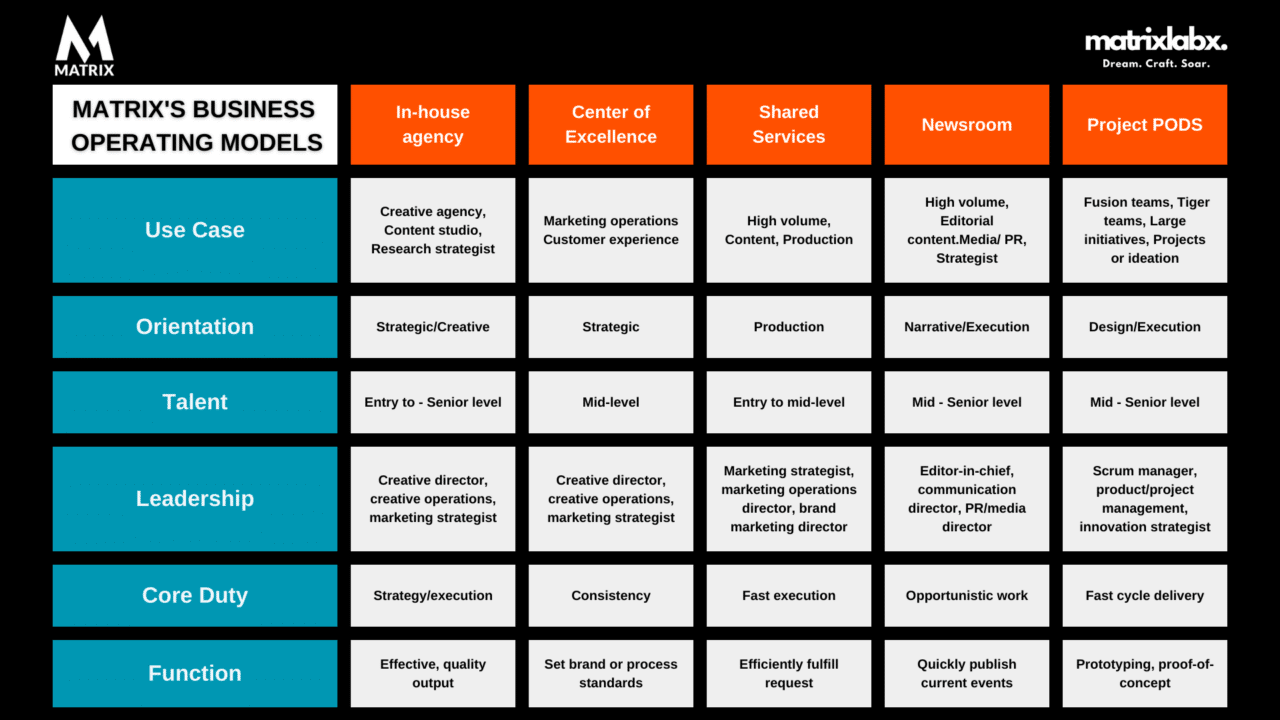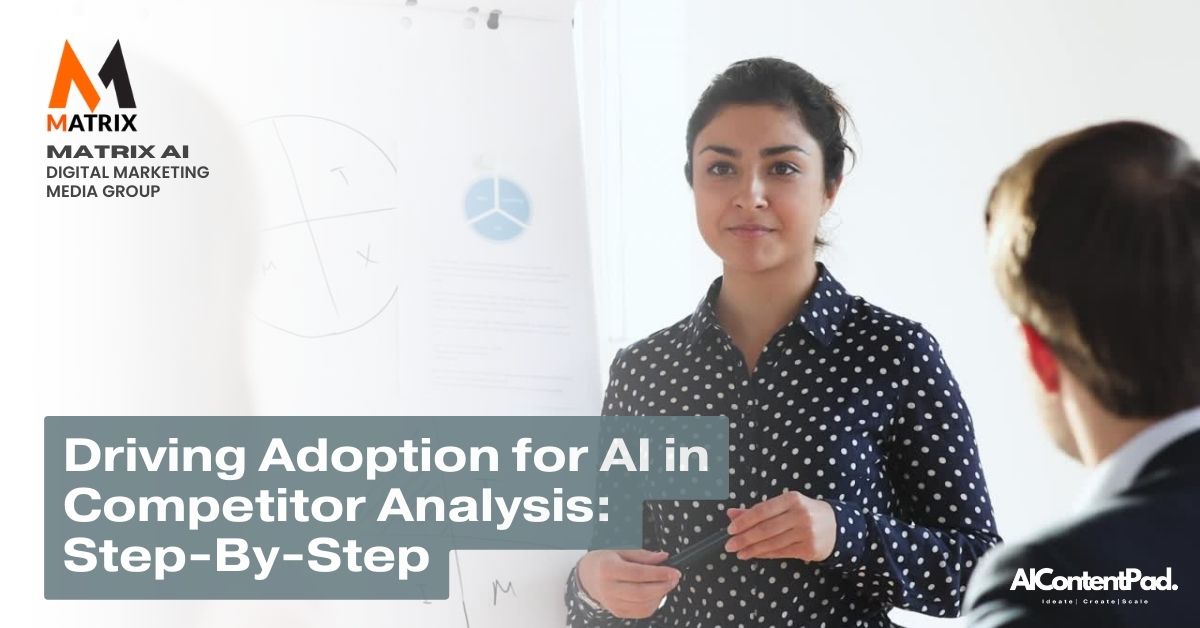A Strategic Guide to Implementing an AI in Competitor Analysis for Enhanced Competitive Insights
Adopting AI for competitor analysis is like upgrading from a map and compass to a GPS for navigating a vast, ever-changing landscape.
While traditional methods can still guide you, AI acts as the GPS—providing real-time data, predictive insights, and a more accurate path to your destination, allowing you to stay ahead of the competition with precision and speed.
Why is a competitive analysis important for businesses?

A competitive analysis is essential for businesses because it provides valuable insights into the external landscape.
It helps companies make informed decisions about their strategies and positioning and helps them avoid tarpit ideas.
Here are key reasons why competitive analysis is critical:
1. Identifying Market Trends
Competitive analysis helps businesses understand current market trends, shifts in consumer behavior, and emerging technologies.
By monitoring competitors, businesses can adapt quickly to market changes and ensure they remain relevant and competitive.
2. Understanding Competitor Strengths and Weaknesses
By analyzing competitors’ strengths and weaknesses, companies can identify gaps in the market they can exploit.
Understanding what competitors are doing well or where they are lacking allows businesses to differentiate themselves and offer unique value propositions.
3. Improving Strategic Decision-Making
Competitive analysis provides data that informs decision-making processes across marketing, product development, pricing, and customer service.
Businesses can avoid costly mistakes and seize opportunities by basing their strategies on well-researched insights.
Unlock Your Website’s Full Potential with a SEO Fix Program
Even the best websites can struggle without robust SEO. Our $2,500 SEO Quick Fix Package is crafted for businesses that demand fast, measurable results. We start with an in-depth SEO audit to diagnose your site’s performance, then implement five targeted optimizations to boost your rankings and drive more traffic.
4. Enhancing Product and Service Offerings
By evaluating competitors’ offerings, businesses can improve their products or services.
This might involve adding new features, improving quality, or addressing customer pain points that competitors must consider.
5. Identifying Opportunities for Innovation
A thorough competitive analysis can reveal innovation opportunities.
Businesses can develop new products, adopt advanced technologies, or explore underserved customer segments by understanding where competitors lag.
6. Setting Benchmarks
Competitive analysis helps businesses set performance benchmarks by comparing their metrics (e.g., revenue, customer acquisition, market share) with key competitors.
This comparison allows businesses to set realistic goals and measure their progress.
7. Anticipating Competitor Moves
Regularly analyzing competitors’ strategies allows businesses to anticipate potential moves, such as new product launches or marketing campaigns.
This foresight enables proactive responses, giving businesses an advantage.
8. Optimizing Marketing and Sales Strategies
Understanding how competitors position themselves in the market, pricing models and promotional tactics helps businesses refine their marketing and sales strategies.
This ensures they effectively target their audience and maximize their reach.
Return on Investment (ROI) from Thought Leadership SEO
Thought leadership SEO campaigns, which involve strategic planning and high-quality content creation, have demonstrated a return on advertising spend (ROAS) of 9.10, equating to a 748% ROI, with a typical break-even point at around 9 months. Review how to win with SEO Services.
9. Mitigating Risks
Competitive analysis enables businesses to identify threats like new market entrants or disruptive technologies.
By staying informed about competitors, businesses can adjust their strategies to mitigate risks and protect their market position.
10. Enhancing Customer Understanding
Analyzing how competitors engage with and serve their customers can help businesses gain deeper insights into customer preferences and pain points.
This can help improve customer satisfaction, retention, and loyalty.
In summary, competitive analysis is critical to a business’s strategy. It allows companies to stay agile, innovate, and maintain a competitive edge in a dynamic market.
Driving Adoption for AI in Competitor Analysis: Step-By-Step

Transforming Insights with AI: A Game-Changer for CMOs
Did you know that 84% of marketing leaders report an increase in revenue directly from implementing AI in their strategies?
As the competitive landscape evolves, leveraging artificial intelligence (AI) for competitor analysis can be a game-changer for Chief Marketing Officers (CMOs) aiming to stay ahead of the curve.
However, adopting AI is often met with apprehensions and uncertainties. This article aims to address these concerns head-on, providing transparent information and evidence-based recommendations to drive AI adoption seamlessly.
Addressing Common Concerns About AI Adoption
Fear of Complexity and Integration
One of the most prevalent concerns among CMOs is the perceived complexity and integration of AI technologies into existing systems.
Feeling hesitant about introducing a new technology that might disrupt current processes is natural. However, modern AI solutions are designed to integrate smoothly with your existing tools, offering intuitive interfaces and seamless data integration.
For instance, many AI platforms now come with plug-and-play features that require minimal technical expertise, making the transition far more manageable than it appears.
Ensuring Data Privacy and Security
Another significant concern is data privacy and security. With data breaches becoming increasingly common, safeguarding sensitive information is paramount.
Reliable AI vendors prioritize data security, employing advanced encryption methods and compliance with stringent regulations such as GDPR and CCPA.
By selecting trusted AI partners, CMOs can ensure their data remains secure while harnessing AI’s power for competitor analysis.
Content That Converts: Transparent Pricing for Maximum ROI
Explore Matrix Marketing Group’s Flexible Pricing Plans for Premium Content and Marketing Solutions Tailored to Your Goals.
Evidence-Based Recommendations for AI Implementation
Start Small and Scale Gradually
Begin with pilot projects to demonstrate the potential of AI in competitor analysis.
By starting small, you can evaluate the effectiveness of AI tools in a controlled environment, making it easier to refine and scale successful initiatives across your organization.
Invest in Training and Support
Empower your team with the necessary training and support to maximize the benefits of AI tools.
Continuous education and resources ensure that your marketing team can effectively leverage AI, driving better insights and informed decision-making.
Partner with Industry Leaders
Collaborate with AI providers who have a proven track record in your industry.
Partnering with reputable vendors provides you with cutting-edge technology and offers the strategic guidance needed to navigate the complexities of AI adoption.
By addressing these concerns and following evidence-based recommendations, CMOs can confidently drive the adoption of AI in competitor analysis, unlocking new levels of insight and strategic advantage.
Adoption of AI in Competitor Analysis
What is Driving the Adoption of AI in Competitor Analysis?
Driving the adoption of AI in competitor analysis involves encouraging and enabling the integration of artificial intelligence technologies into the competitor analysis processes within a marketing strategy.
This integration aims to enhance competitive insights’ accuracy, efficiency, and depth.
Why is it Important for the CMO?
Adopting AI-driven competitor analysis is crucial for chief marketing officers (CMOs) to stay ahead in today’s fast-paced business landscape.
AI can quickly analyze vast amounts of data, uncovering hidden trends and competitive moves that might be missed through traditional methods.
This leads to more informed strategic decisions, better market positioning, and increased market share.
Content That Converts: Transparent Pricing for Maximum ROI
Explore Matrix Marketing Group’s Flexible Pricing Plans for Premium Content and Marketing Solutions Tailored to Your Goals.
Where Does AI Fit in the Strategy?
AI can seamlessly integrate various aspects of competitor analysis, from monitoring competitors’ digital footprints to predicting their future strategies.
Tools like machine learning algorithms, natural language processing, and predictive analytics provide CMOs with real-time insights and actionable intelligence.
Whether through social media sentiment analysis, website traffic monitoring, or competitor ad spend tracking, AI offers myriad applications that transform how competitor analysis is conducted.
By understanding the steps and benefits of implementing AI in competitor analysis, CMOs can facilitate smarter, data-driven strategic planning, compelling them to rethink traditional methods and explore innovative solutions.
The Painful Lack of Competitive Analysis
As a CMO, one of the hardest-hitting challenges you face is the need for comprehensive competitive analysis.
It’s nearly only possible to stay ahead with a clear understanding of what your competitors are doing.
Are they lowering prices, launching innovative campaigns, or winning your audience with superior customer experiences? You’re left in the dark; this lack of insight could cost you dearly.
Why This Situation Is Dire
Without actionable competitive intelligence, your marketing strategies are essentially flying blind.
You could invest heavily in channels that deliver minimal return while your competitors capture market share with smarter, data-driven tactics.
This wastes resources and can lead to missed opportunities, reduced customer retention, and a significant impact on your bottom line.
Can you afford to keep guessing while your rivals press their advantage? Digital Marketing for Solar Companies to Increase Sales
The AI Marketing Solution You Need
Imagine having access to real-time competitive analysis at your fingertips.
Our AI-driven marketing solutions offer just that. With advanced algorithms and comprehensive data scraping, you can track competitor movements, gauge their strategies, and adjust your campaigns with pinpoint accuracy.
No more shooting in the dark—make informed, strategic decisions to stay one step ahead.
Embrace AI-driven insights to refine your marketing strategies, optimize your spending, and outperform the competition consistently.
Isn’t it time you turned the tables and gave your marketing strategies the competitive edge they deserve? Discover how our AI marketing solutions can revolutionize your approach today.
Expert Opinion: The Ultimate Guide to AI in Competitor Analysis

George Schildge, managing director at Matrix
“As a business leader, I’ve explored various methodologies for staying ahead in the market, but none have matched the impact of AI in competitor analysis.
The guide ‘Driving Adoption for AI in Competitor Analysis: Step-By-Step’ is an indispensable resource. It demystifies the AI integration process, making it accessible even to the less technologically inclined. Use AIProdPad to dive deep into rich data to drive competitive analysis.
Our marketing strategies have become significantly more targeted and effective thanks to the deep insights we’ve gained. This guide is a must-read for any CMO looking to revolutionize their marketing approach.”
Dr. Mark Johnston, AI Specialist and Data Strategist
“Integrating AI into competitor analysis can seem daunting, but ‘Driving Adoption for AI in Competitor Analysis: Step-By-Step’ breaks it down beautifully. As an AI specialist, I’ve seen many companies hesitate due to the perceived complexity.
This guide provides a clear, actionable roadmap that simplifies the adoption process.
From data collection to interpretation, it equips teams with the necessary tools and knowledge to harness AI’s full potential. It’s been crucial in helping organizations transition smoothly and gain a competitive edge.”
Emily Roberts, Marketing Director at Global Ventures
“AI has fundamentally transformed the landscape of competitor analysis, and the guide ‘Driving Adoption for AI in Competitor Analysis: Step-By-Step’ is at the forefront of this revolution. As a Marketing Director, I’ve always valued data-driven decisions, and this resource provides a comprehensive framework to leverage AI effectively.
It covers everything from initial implementation to advanced analytics, turning complex data into actionable insights.
Reading through it felt like having a personal consultant walking us through each step, ultimately refining our strategies and driving significant growth.”
These testimonials highlight the real-world impact of integrating AI into competitor analysis—provoking thought, sparking curiosity, and encouraging readers to delve into this transformative resource.
The Best Practices for Driving Adoption of AI in Competitor Analysis
Step-by-Step Guide to Implementation
Incorporating AI into competitor analysis can revolutionize how organizations understand their market position.
To drive adoption effectively, companies must follow a structured approach that ensures smooth integration and maximizes the technology’s potential.
Step 1: Understand Your Needs
Identify the specific goals and challenges your business faces in competitor analysis. A detailed needs assessment can help determine how AI can best be applied.
For instance, BrandPulse, a relatively lesser-known retail analytics firm, successfully streamlined its market research and enhanced precision by pinpointing gaps in its current analysis methods.
This preparatory step set the foundation for targeted AI implementation.
Step 2: Choose the Right AI Tools for AI Competitor Analysis
It is crucial to select AI tools that align with your identified needs. Consider factors like scalability, ease of integration, and functionality.
An emerging fintech player, FinMetrics Solutions, thrived by opting for AI tools seamlessly integrated with their existing data infrastructure, enabling enhanced predictive analysis and real-time market trend tracking.
Their success underscores the importance of choosing adaptable AI solutions.
Step 3: Foster a Culture of Curiosity and Learning
Cultivating an organizational culture that embraces innovation and continuous learning is vital.
Engage your teams by demonstrating the tangible benefits of AI through training sessions and pilot projects.
EcoTrend, a sustainability-focused consultancy, significantly boosted its competitive analysis capabilities by fostering a culture where employees were encouraged to experiment with AI tools and share their insights. This accelerated buy-in and drove widespread adoption.
By following these best practices, businesses can effectively integrate AI into their competitor analysis processes, leading to more insightful, data-driven decisions.
BrandPulse, FinMetrics Solutions, and EcoTrend’s experiences highlight how a strategic approach can yield successful outcomes, even for lesser-known brands in competitive industries.
Unlocking the Power of AI for Competitor Analysis
Step-by-Step Guide to Drive Adoption Using the Matrix Framework
Integrating Artificial Intelligence (AI) into competitor analysis can seem daunting, but leveraging the Matrix Framework can streamline the process and ensure success.
The Matrix Framework breaks down the integration into manageable steps, sparking curiosity and engagement among your team and stakeholders.
Step 1: Establish Clear Objectives
Begin by defining the specific goals you want to achieve with AI in your competitor analysis.
Are you looking to enhance data accuracy, speed up analysis, or gain deeper insights into competitive strategies? Clear objectives will guide your strategy and help you select the right AI tools.
Step 2: Build a Multi-Disciplinary Team
Assemble a diverse team of data scientists, market analysts, and domain experts. This diversity will ensure a holistic approach where AI capabilities are fully leveraged.
Encourage your team to explore and experiment with different AI technologies, fostering a culture of innovation.
Drive Better Results with a Complimentary Marketing Audit
Take the guesswork out of your marketing strategy. Our Free Marketing Audit is designed to analyze your current efforts, identify gaps, and uncover growth opportunities. Whether you’re struggling with low ROI, limited engagement, or unclear targeting, we’ll provide actionable insights to help you achieve your business goals.
Step 3: Implement a Pilot Project
Start with a small, focused pilot project.
Identify a specific aspect of competitor analysis, such as historical trend analysis or social media sentiment, where AI can immediately impact.
Use this pilot to demonstrate the potential benefits, gather feedback, and refine your approach.
Step 4: Scale and Optimize
Once the pilot proves successful, gradually scale your AI implementation across other areas of competitor analysis.
Continuously optimize AI models and processes based on performance and feedback. Provide training sessions and resources to help your team and stakeholders adopt these AI-driven insights.
Following these steps within the Matrix Framework, you can seamlessly integrate AI into your competitor analysis, driving adoption and leading your organization to unprecedented strategic insights.
AI in Competitor Analysis for Better Sales Results

Understanding the Power of AI
Artificial Intelligence (AI) stands at the forefront of technological advancement, offering unprecedented possibilities for competitor analysis.
This guide provides a comprehensive roadmap for harnessing AI’s capabilities to propel your business in the competitive landscape.
The Step-By-Step Approach to AI Integration
Step 1: Aligning AI with Business Goals for Competitor Analysis
The first critical step is ensuring that your AI initiatives align with your business objectives.
This entails identifying areas where AI can add value, complementing your strategic goals, and setting clear, achievable targets.
Step 2: Data Collection and Preparation
A robust AI system relies on high-quality data. Therefore, gathering a diverse and comprehensive dataset is paramount.
This phase includes cleaning and organizing your data to ensure accuracy, thus laying a solid foundation for your AI models.
Building and Maintaining AI Systems
Step 3: Choosing the Right AI Tools
Selecting the appropriate AI tools tailored to your needs can be a game-changer.
The guide elaborates on various options, weighing their strengths and weaknesses and helping you make informed decisions to suit your competitive analysis requirements.
Step 4: Training and Fine-Tuning AI Models
Training your AI involves teaching it to understand patterns and draw insights from the data.
This step covers best practices for training and continuously refining your model to improve accuracy and effectiveness over time.
Leveraging AI Insights for Strategic Advantage
Step 5: Interpreting and Using AI Output
Lastly, the output generated by AI systems needs to be actionable.
This involves translating complex AI data into understandable insights and utilizing these insights to inform decision-making, thereby staying ahead of competitors.
Incorporating AI into competitor analysis offers a strategic edge, providing deeper insights, greater accuracy, and a proactive stance in the market.
Dive into each step to uncover how AI can transform your competitive strategy and drive your business to new heights.
Maximize Conversions Fast with Our PPC Campaign Launch!
Turn Clicks into Customers with a Rapid-Deployment Pay-Per-Click Strategy


